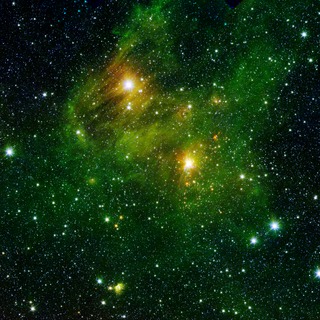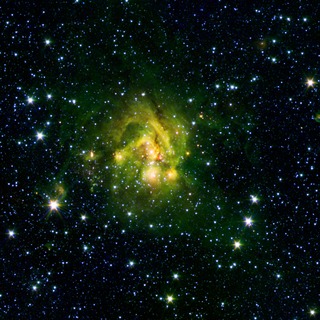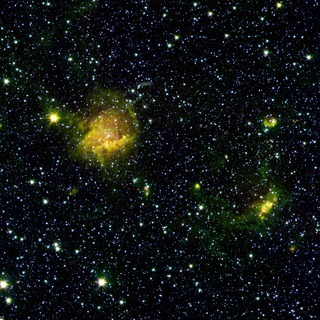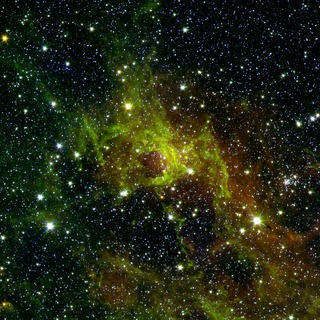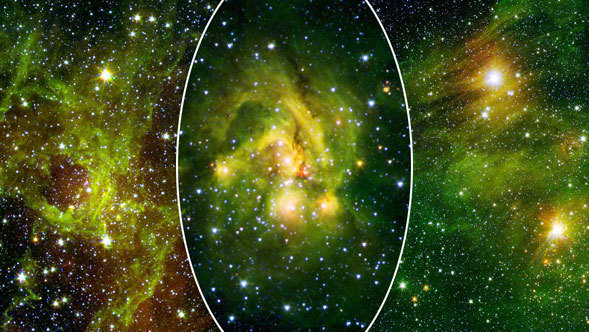
News Release • July 28th, 2010 • feature10-12 •
By Adam Hadhazy
A new survey by NASA's Spitzer Space Telescope has turned up treasures aplenty in the outer regions of the Milky Way, where amidst fogs of interstellar chemicals some rare, young and enormous stars are blasting gas out into space.
These very first images from the ongoing GLIMPSE360 survey are but a taste of what will be revealed during Spitzer's scan of the far-flung reaches of our galaxy.
"GLIMPSE360 will see to the edge of the Milky Way galaxy better than any telescope has before," says Barbara Whitney, principal investigator for the survey, Senior Scientist at the University of Wisconsin and a Senior Research Scientist at the Space Science Institute in Boulder, Colorado.
The new survey is an extension of the recent GLIMPSE survey that looked into the Milky Way's bustling center full of stars and dust, and home to a monstrous black hole. From our solar system, which is about two-thirds of the way out from this galactic "downtown," Spitzer's view now shifts to mostly remote areas. In this way, GLIMPSE360 is picking up where the original GLIMPSE left off and will survey the remaining half of the Milky Way's disk out to its very edge.
"It's like looking into the wilderness of our galaxy," says Whitney. "While mapping the stars and dust out there, we hope to answer some major questions about an environment that is very different from the inner Milky Way."
Astronomers want to know how stars arise in this vast expanse that has less star-forming material and a lower concentration of heavy elements, or "metallicity," than found toward the galactic core. Other goals of GLIMPSE360 are detailing the structure of the outer galaxy that is swept by two massive spiral arms and where the Milky Way's star-spangled disk thickens. While trailblazing our galaxy's outback, Spitzer will also come across many fascinating cosmic objects for researchers to further investigate.
Rather like the early westward explorers of North America, GLIMPSE 360 will forge all the way ahead to where our galaxy's shores meet the relative void of intergalactic space. Scientists do not yet know where the Milky Way galaxy "ends," and if recent discoveries in other galaxies are any indication, the outer rim may host unexpected and unknown pockets of star formation.
"We look forward to what GLIMPSE360 will show us," Whitney says. "The adventure is just getting started."
GLIMPSE360, which stands for Galactic Legacy Infrared Mid-Plane Survey Extraordinaire, began last September and will run through early 2011. A full processing of its reams of data will then take another year or so, but chunks of this valuable astronomical information will be released along the way. When combined with the original GLIMPSE and GLIMPSE3D data, the finished survey will offer future researchers a complete field of view of our disk-like, circular galactic abode - hence "360" in the name - ranging in height from 2.7 degrees to 8.4 degrees at the Milky Way's center, or a band five to almost 17 full moons high.
GLIMPSE360 is part of Spitzer's "warm" mission that started in May 2009 when the satellite depleted its liquid coolant and now surveys the cosmos in infrared wavelengths of light 3.6 and 4.5 microns across, or millionths of a meter.

